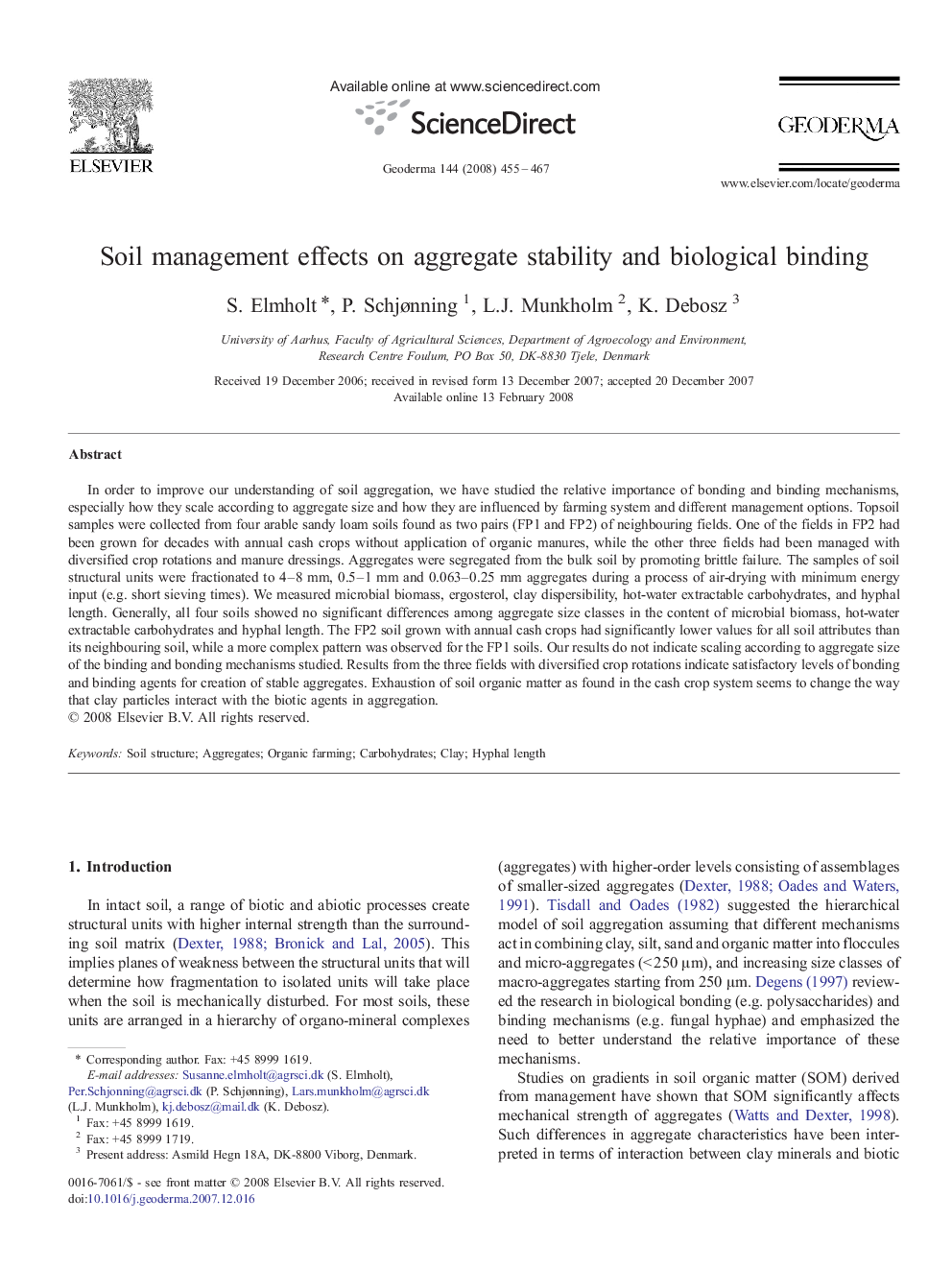| Article ID | Journal | Published Year | Pages | File Type |
|---|---|---|---|---|
| 4575273 | Geoderma | 2008 | 13 Pages |
In order to improve our understanding of soil aggregation, we have studied the relative importance of bonding and binding mechanisms, especially how they scale according to aggregate size and how they are influenced by farming system and different management options. Topsoil samples were collected from four arable sandy loam soils found as two pairs (FP1 and FP2) of neighbouring fields. One of the fields in FP2 had been grown for decades with annual cash crops without application of organic manures, while the other three fields had been managed with diversified crop rotations and manure dressings. Aggregates were segregated from the bulk soil by promoting brittle failure. The samples of soil structural units were fractionated to 4–8 mm, 0.5–1 mm and 0.063–0.25 mm aggregates during a process of air-drying with minimum energy input (e.g. short sieving times). We measured microbial biomass, ergosterol, clay dispersibility, hot-water extractable carbohydrates, and hyphal length. Generally, all four soils showed no significant differences among aggregate size classes in the content of microbial biomass, hot-water extractable carbohydrates and hyphal length. The FP2 soil grown with annual cash crops had significantly lower values for all soil attributes than its neighbouring soil, while a more complex pattern was observed for the FP1 soils. Our results do not indicate scaling according to aggregate size of the binding and bonding mechanisms studied. Results from the three fields with diversified crop rotations indicate satisfactory levels of bonding and binding agents for creation of stable aggregates. Exhaustion of soil organic matter as found in the cash crop system seems to change the way that clay particles interact with the biotic agents in aggregation.
